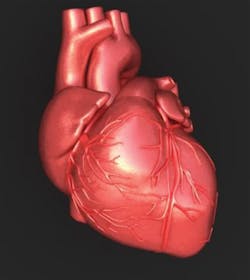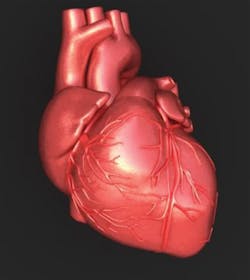Photostimulation may help get to the heart of cardiac arrest recovery
Scientists at the University of Bonn (Germany) have succeeded in altering cardiac muscle cells to make them controllable with light, and then causing conditions such as arrhythmia in genetically modified mice.1 The work holds promise for enabling heart attack recovery.
The researchers genetically modified mice to make their heart muscles express channelrhodopsin-a protein that functions as both a light sensor and an ion channel in the cell membrane. When stimulated with blue light, the channel opens, and positive ions flow into the cell. This causes a change in the cell membrane's pressure, which stimulates cardiac muscle cells to contract.
This allowed the researchers to change the electric potential of the mouse heart at will, and selectively produce arrhythmia of the atrium or the ventricle-which are among the most common causes of death after a heart attack. These conditions develop when large quantities of heart cells die. Because the scar tissue that replaces them has a different electrical activity than the healthy heart muscle, it challenges the heart's operation: Normally, electric impulses spread across the heart in a temporally and spatially tightly controlled manner, creating a closely coordinated contraction. However, if muscle areas decouple electrically, this mechanism no longer works, and parts of the heart pulse at different rhythms, causing blood flow to slow or stop.
The scientists can now trigger this decoupling through photostimulation, targeting just a few cells at a time or direct larger areas-which promises to enable discovery about which areas of the heart are especially sensitive to electric disruptions. The approach is much better suited to research than stimulation via electrodes, because with that method toxic gases result when stimulation lasts longer than a few milliseconds. With the new approach, cells withstand stimulation of several minutes at a time without problem.
1. T. Bruegmann et al., Nature Methods (2010), doi: 10.1038/nmeth.1512
More BioOptics World Current Issue Articles
More BioOptics World Archives Issue Articles

